故宫英文导游ppt
- 格式:ppt
- 大小:8.27 MB
- 文档页数:15

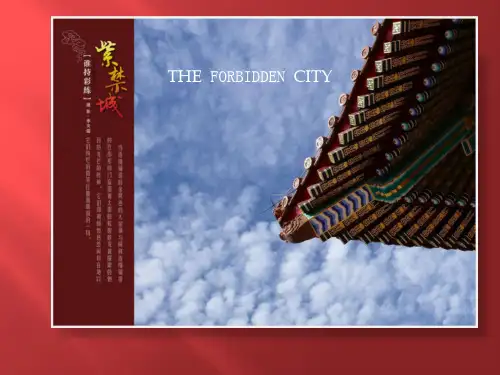
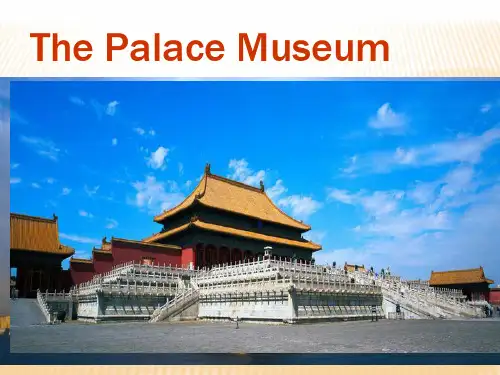
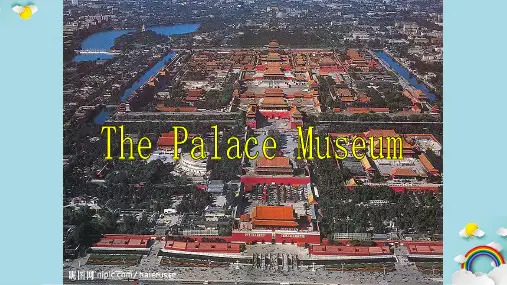

This is the palace museum; also know as the Purple Forbidden City. It is the largest and most well reserved imperial residence in China today. Beijing Forbidden City is the head of the world's top five palace. The Forbidden City was built begin in 1406 and it took 14 years to built it. The first ruler who actually lived here was Ming Emperor Zhudi. North to south is 961 meters, and 753 meters from east to west. And the area of about 725,000 square meters. The Imperial Palace has 8704 rooms. In 1987 the Forbidden City was recognized a world cultural legacy.这是故宫博物院,也被称为紫禁城。
它是北京现在最大、保存最完好的宫殿。
北京故宫是世界五大宫殿之首。
紫禁城建于1906年,历时14年建造完成。
第一个明朝统治者朱棣便住在这里。
故宫南北长961米,东西宽753米,建地面积725,000平方米。
宫殿共有8704个房间。
在1987年紫禁城成为世界文化遗产。
Forbidden City building Classified as "outside in" and "inner court" two parts. 太和palace中和palace and保和palace are the center of the outside in, Where the emperor would hold meeting and exercise of power. 乾清palace、交泰palace、坤宁palace are center of Inner court . Feudal emperors and princess lived here.故宫的建筑分为“外朝”与“内廷”两大部分. 外朝以太和殿、中和殿、保和殿三大殿为中心,是皇帝举行朝会和行使权力的地方。
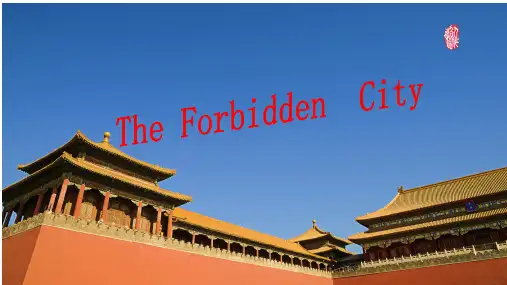
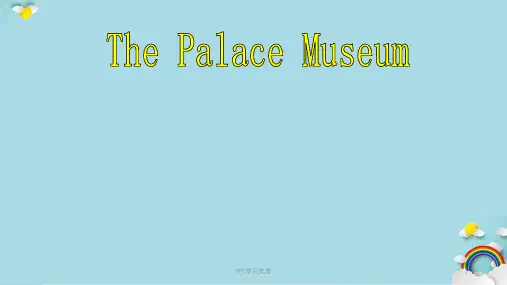

故宫英文介绍pptThe Forbidden City, also known as the Palace Museum, is a UNESCO World Heritage site located in the heart of Beijing, China. It was the imperial palace of the Ming and Qing dynasties for over 500 years, serving as the political and ceremonial center of Chinese government. The Forbidden City is a symbol of China's rich cultural heritage and a testament to the country's imperial past.Constructed in the early 15th century, the Forbidden City covers an area of 180 acres and consists of over 980 buildings with approximately 9,000 rooms. The complex is surrounded by a 26-foot high wall and a moat, creating a sense of grandeur and isolation from the outside world. The architecture of the Forbidden City is a blend oftraditional Chinese design principles with unique imperial elements, such as yellow roof tiles and intricate carvings.The Forbidden City is divided into two main sections: the Outer Court and the Inner Court. The Outer Court wasused for ceremonial and administrative purposes, while the Inner Court was the private residence of the emperor andhis family. Each section contains numerous halls, pavilions, courtyards, and gardens, showcasing the grandeur and opulence of the imperial lifestyle.Visitors to the Forbidden City can explore the various halls and courtyards, each with its own uniquearchitectural style and historical significance. Highlights include the Hall of Supreme Harmony, the Hall of Central Harmony, and the Hall of Preserving Harmony, which wereused for important state ceremonies and events. TheImperial Garden, located at the rear of the complex, offers a peaceful retreat from the bustling city streets.In addition to its architectural and historical significance, the Forbidden City houses a vast collectionof cultural artifacts and treasures, including paintings, ceramics, calligraphy, and imperial robes. The Palace Museum has over 1.8 million pieces in its collection, with only a fraction on display at any given time. Theseartifacts provide insight into the artistic, cultural, andpolitical achievements of the imperial dynasties that once ruled China.Overall, the Forbidden City is a must-visit destination for anyone interested in Chinese history, culture, and architecture. It stands as a testament to the country's imperial past and serves as a reminder of China's rich cultural heritage. With its stunning architecture, expansive grounds, and impressive collection of artifacts, the Forbidden City continues to captivate visitors from around the world and remains a symbol of China's enduring legacy.。
